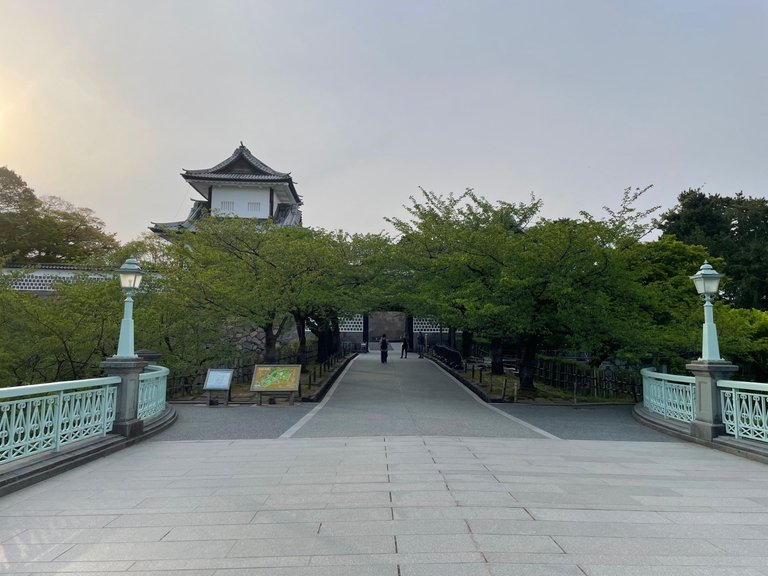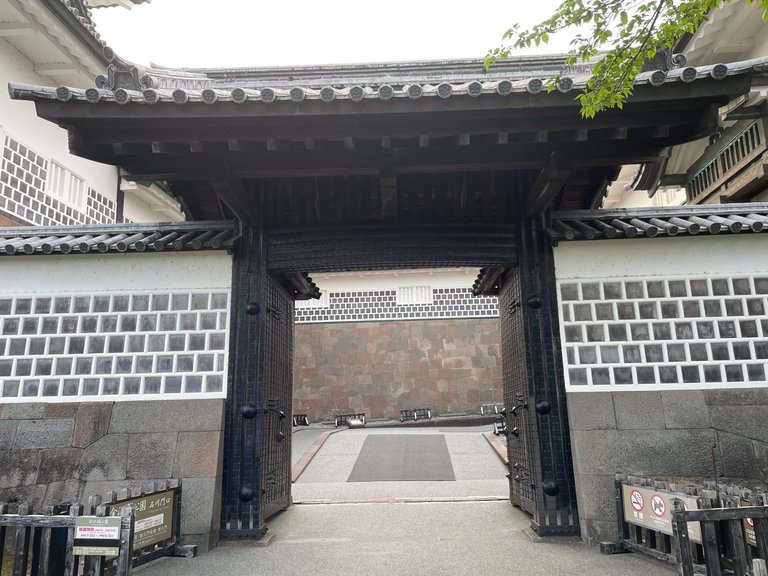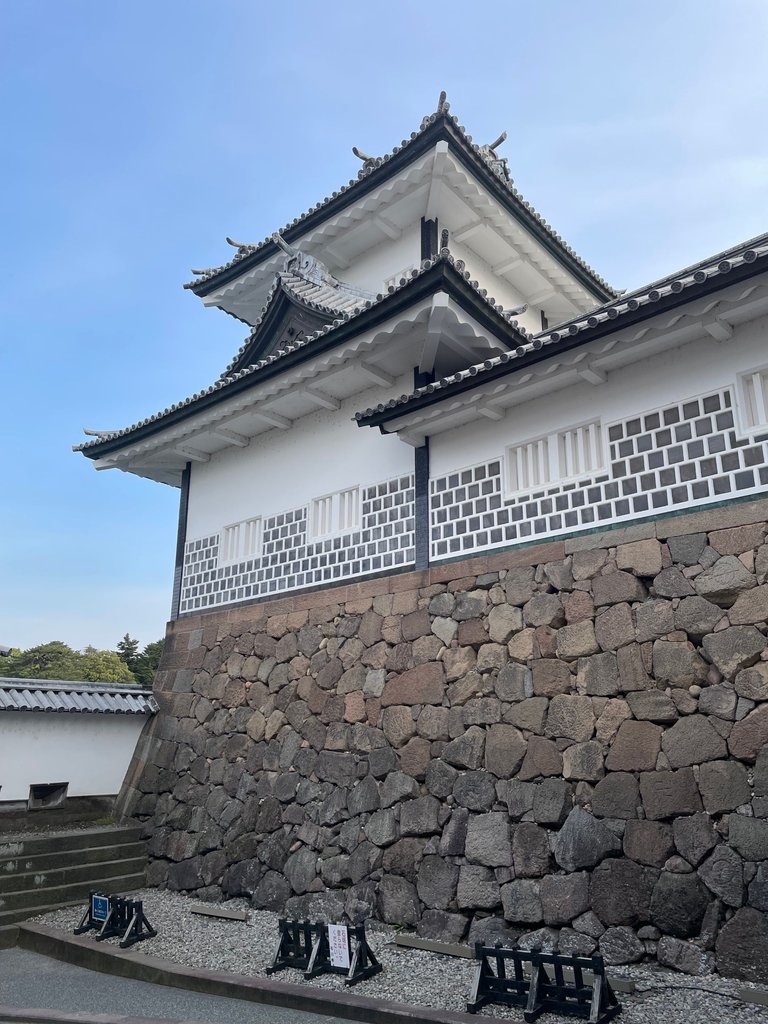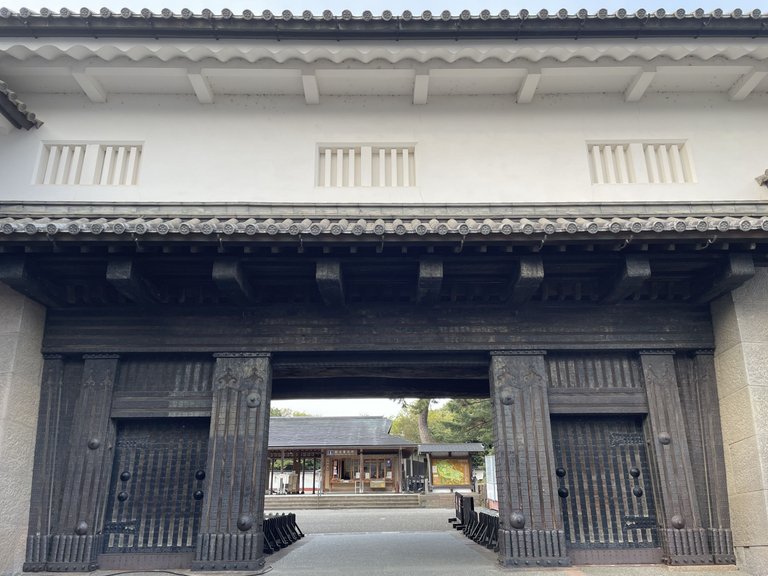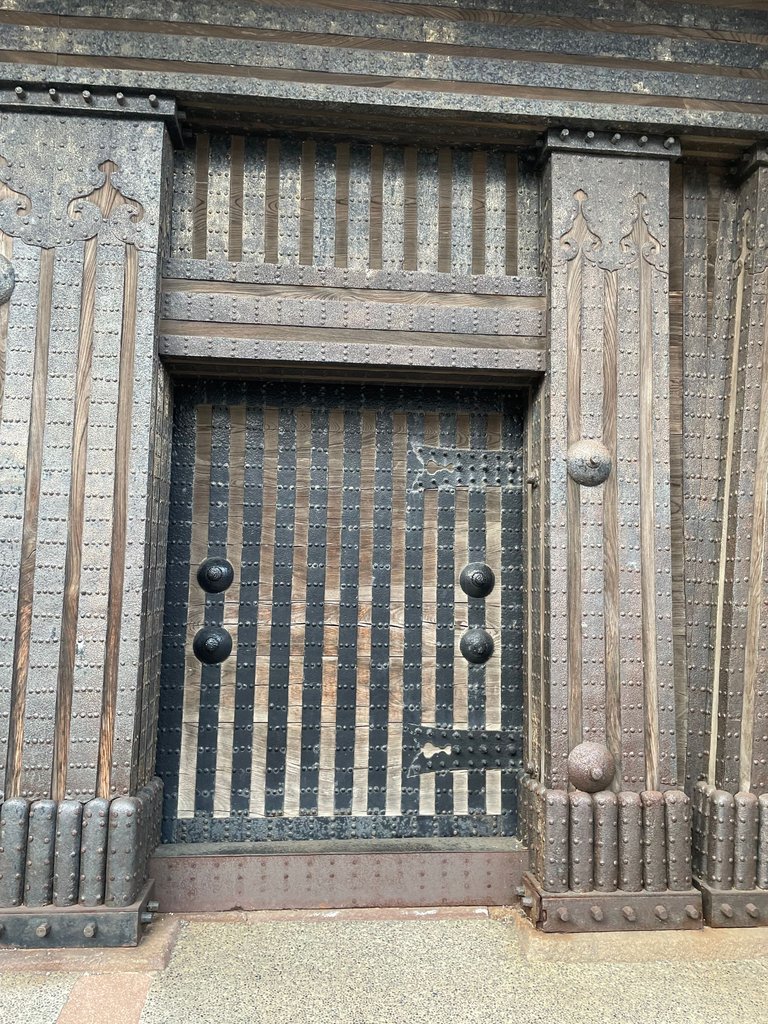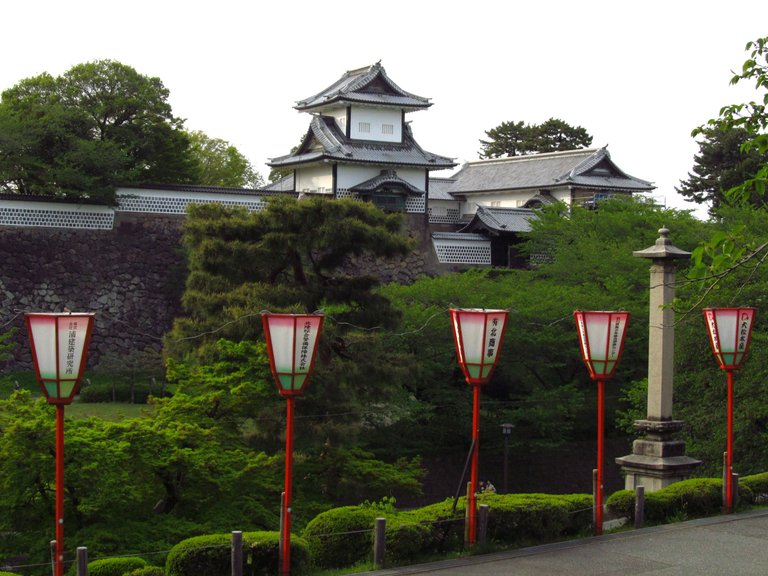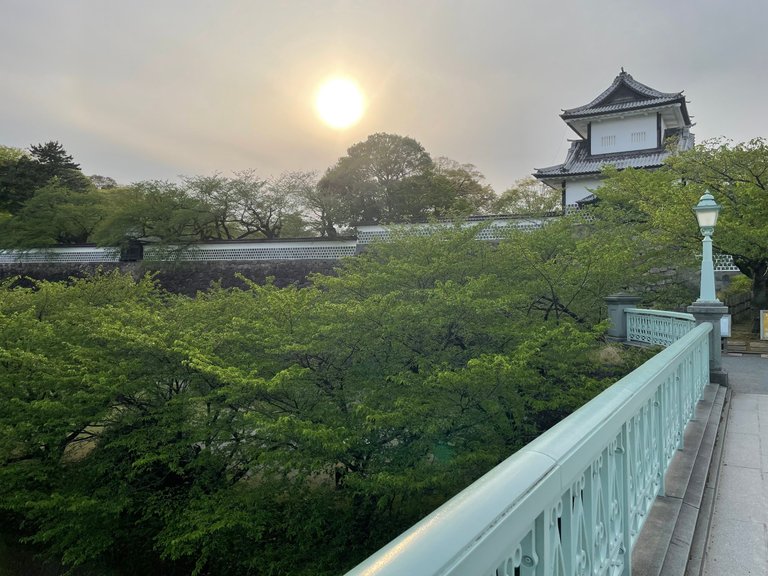Passing through the Ishikawa-mon 👹🍣🎎 Wonderful Japan
When visiting the city of Kanazawa, which is located in Ishikawa Prefecture, there is one highlight that should not be missed: A visit to the castle complex located right in the city center, which in recent times has continued to come back to life. Very few structures of the original castle complex have been preserved in their original state, but various gates and buildings have been rebuilt in the past years so that you can still get a good idea of how imposing Kanazawa Castle was a few centuries ago.
One of the structures that has been preserved in its original state is the Ishikawa-mon. It is located on the east side of the castle complex and served as one of the gates leading to the castle grounds. As mentioned, the gate is one of the few structures of the original castle that has survived the passage of time and it has been registered as an Important Cultural Property of Japan.
Ishikawa-mon is located in the immediate vicinity of the famous Kenroku-en Garden, one of the three most beautiful and impressive landscape gardens in Japan. It forms the entrance to the castle from the garden side and is one of the most striking architectural elements of the complex.
The gate dates back to the Edo period and was originally built as a defensive structure. Kanazawa Castle itself was built in the late 16th century and was the seat of the Maeda clan, one of the richest daimyō families of the Edo period.
The castle was damaged by fire several times, including the destruction of the main tower, which was never rebuilt. After the Meiji Restoration in 1868, the castle grounds were first used by the army, which caused further damage, and later by Kanazawa University. The university and its students were also instrumental in rebuilding various parts of the building after the former castle grounds were converted into a park.
Today, Ishikawa-mon is a popular tourist destination and, as an impressive example of Edo period architecture, it is also an important historical landmark of the city of Kanazawa.
You can access Ishikawa-mon from Kenroku-en Park via a bridge, under which nowadays runs a busy main road. In earlier times, this was probably the site of the moat, parts of which are still preserved in other places.
The first gate you have to pass through is rather narrow and tight and might therefore easier to defend. Directly behind it is a small courtyard, surrounded on all sides by high walls and watchtowers.
You are not yet inside the castle, but have only passed through the first door, so to speak. Here we can see the striking watchtower, which can also be seen in the first photo, from the side again and you can recognize that a guard corridor leads away from there, from which unwanted intruders could be fought off.
The guard corridor seems to almost encircle the entire inner courtyard and also leads over the next, significantly larger gate. This also makes a much bigger impression and makes you feel quite a bit smaller than you did just a few minutes ago.
This gate has two more wooden doors on the left and right side, which are shod with iron and will probably not be so easy to pry open. As the feudal lord who lived here had quite large funds at his disposal, the entire castle complex was massively reinforced and extended for possible defensive purposes. Fortunately, there was no fighting here in Kanazawa at the end of the Edo period, when the Boshin War was raging in large parts of Japan. The last daimyo of the Maeda clan was clever enough to side with the ultimately victorious imperial troops soon enough, even though he had previously remained loyal to the last Tokugawa shogun.
Well, the hours of the Maeda clan and all the other samurai were already numbered, because the new Meiji period led to revolutionary economic and social changes throughout the country. The Maede family also lost their title as regional rulers, but in addition to retaining some of their wealth, they continued to exert greater influence and became involved in cultural and economic affairs in Japan. Apparently, they also contributed to the development of Kanazawa as a cultural center and the preservation of historical sites such as Kanazawa Castle and Kenroku-en Garden.
So perhaps we can also thank the last daimyo, Maeda Yoshiyasu, for allowing us to enjoy this fantastic view of Ishikawa-mon today. We are standing now right in front of the Kenroku-en Garden, which, like the castle complex, is one of the city's biggest tourist attractions. From a distance, the gate is also much more photogenic and you can also stage it much better from there.
Well, perhaps the last statement is open to debate, because the Ishikawa-mon is of course also impressive from very close up and you should definitely not miss out on walking through this historic gate. It's best to go in once and come back out the same way later.
And at the end, you can linger once more on the bridge that connects the park and the castle and dream a little of times gone by. If you've done it right, you should now have a good impression of how impressive and magnificent it once looked here.
Fortunately, some of this splendor has been preserved and so it was not difficult for me to be carried away by the charm of the castle complex. As usual, I kept stopping and taking far too many photos. But that's why I now have a bit of material to introduce you to this fascinating place.
There will be more to see and read about Kanazawa and the castle here soon. So be sure to check back again if you are interested in new pictures and impressions from the Land of the Rising Sun...


